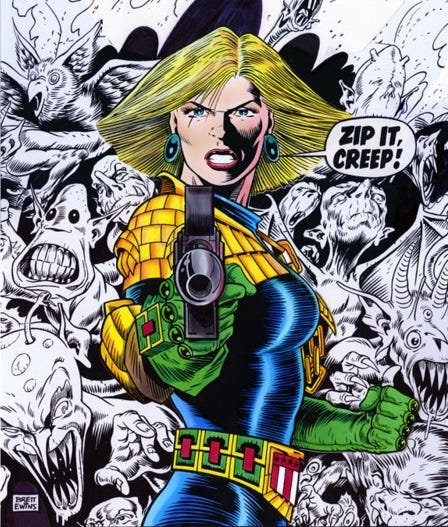Why the Greatest Character in 2000 AD Is NOT Judge Dredd
She’s the psychic cop who has patrolled the dystopian streets of Mega-City One for over four decades, and she’s nobody’s sidekick
I first met her in 1991 within the pages of the Judge Dredd/Batman crossover Judgement on Gotham. It was love at first sight. Her first scene had her answer the phone before it rang. What a perfect introduction to Mega-City One’s premier psychic. It was the promise of a bust-up between Dredd and the Dark Knight that got me to buy the b…


